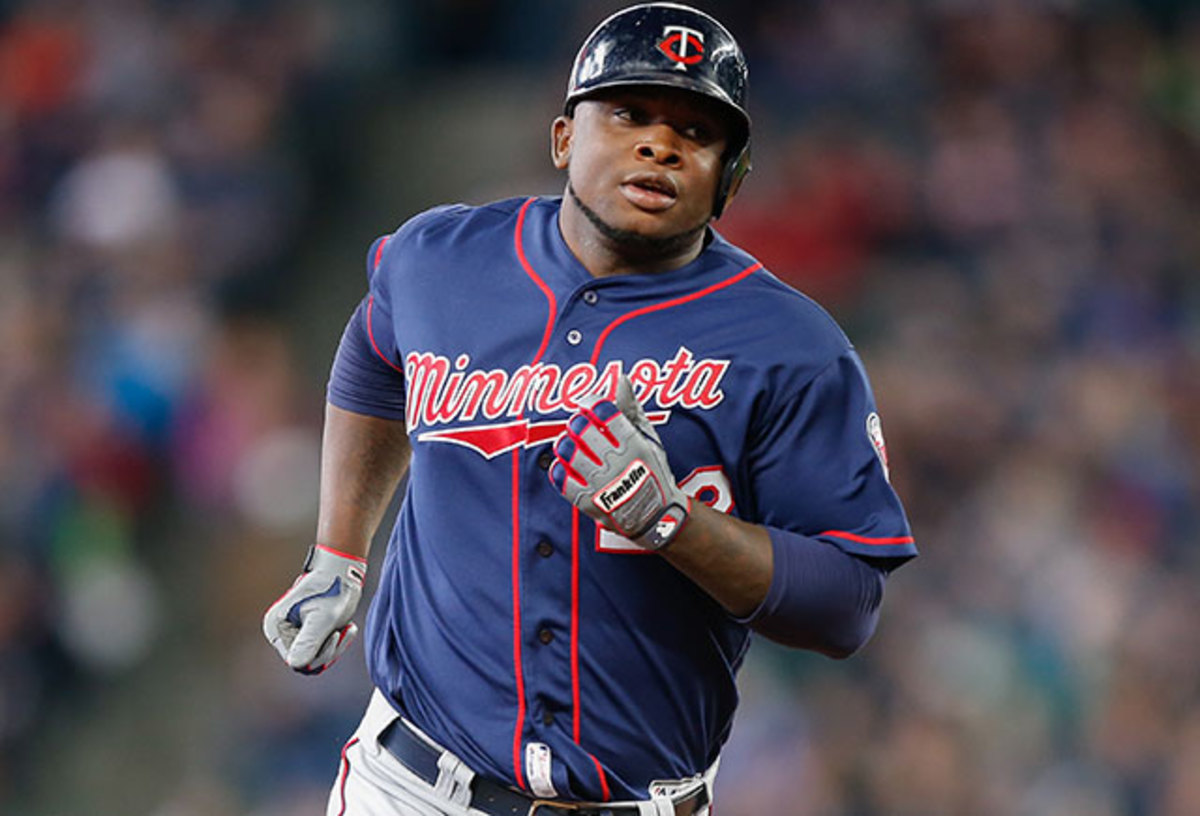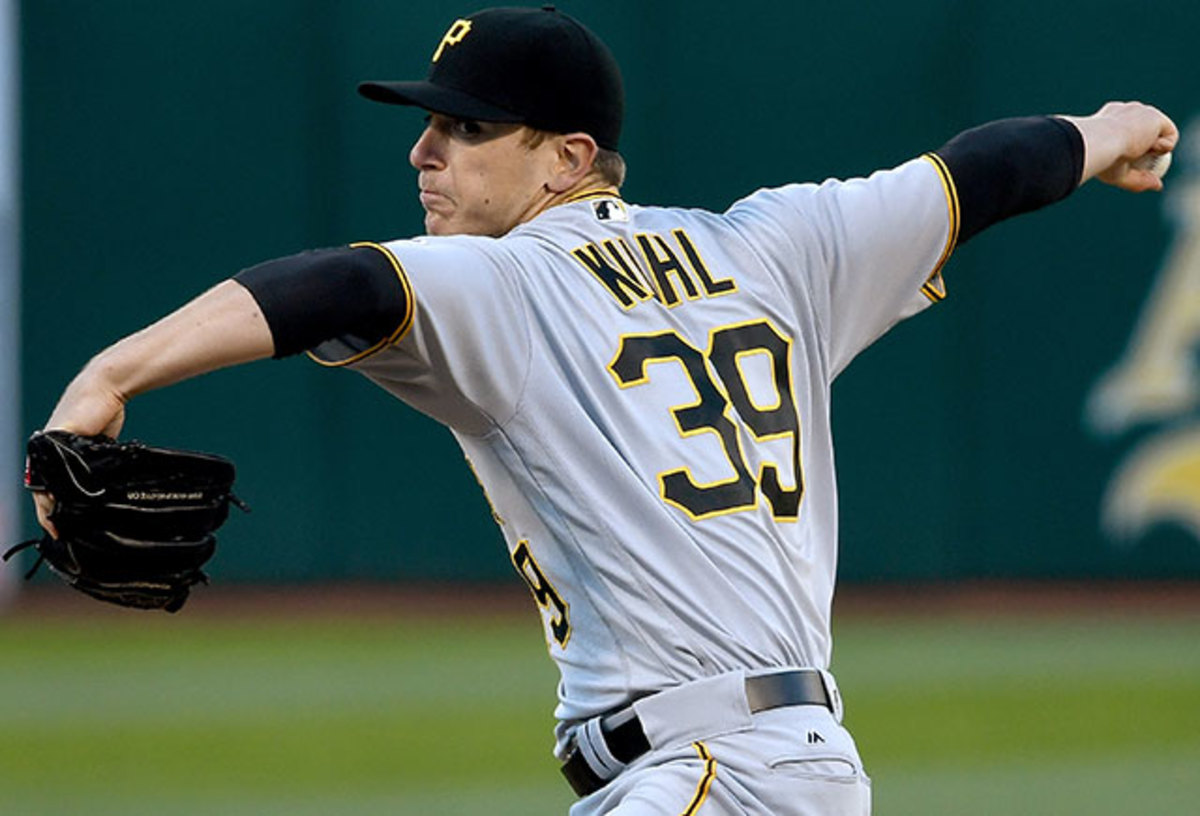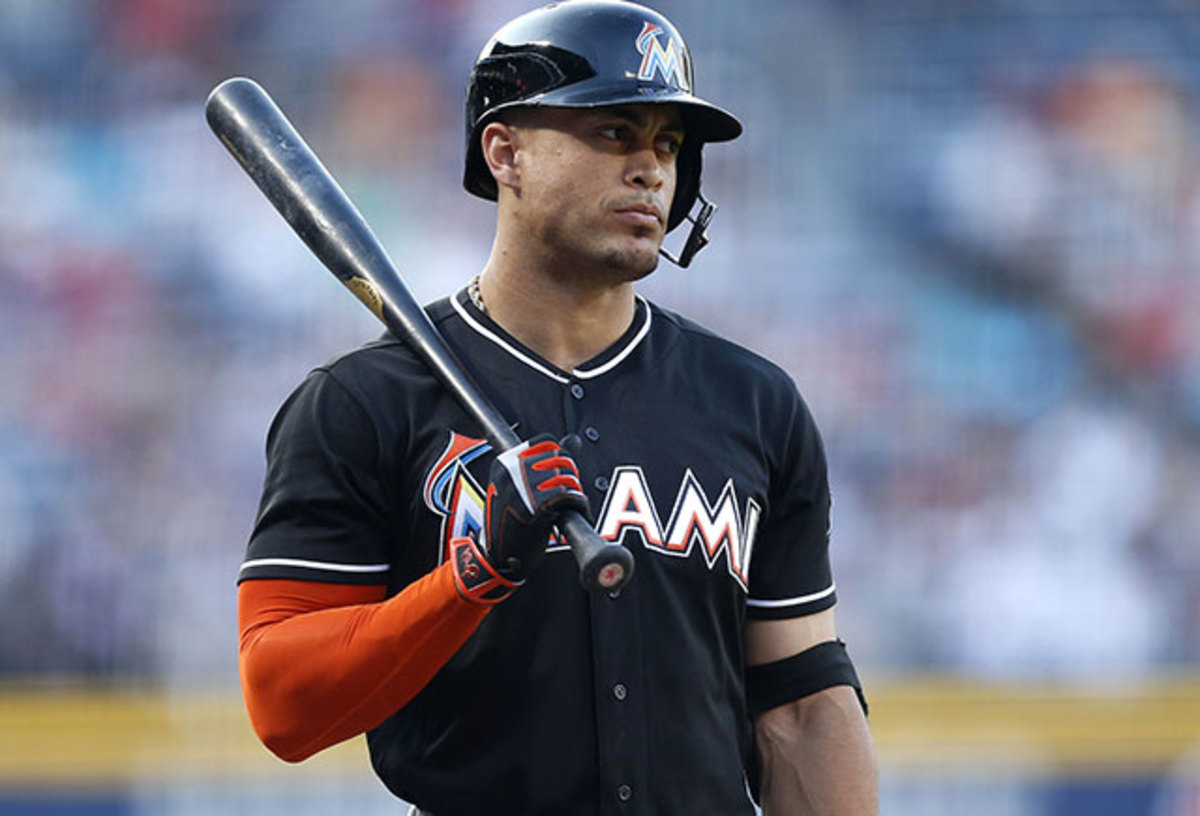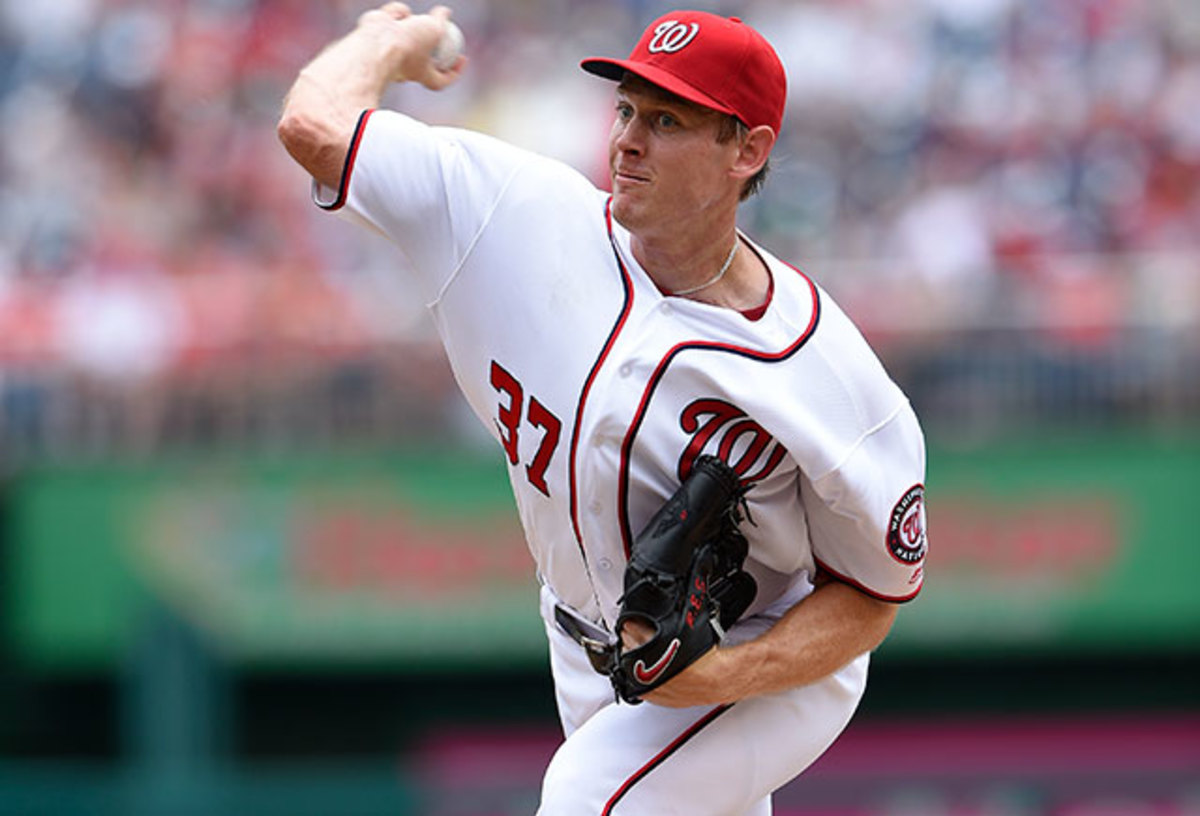The 30: Is a better second half in store for these four MLB teams?

The halfway point of the season is upon us, and with it comes self-reflection. All 30 teams (and their general managers) must consider where they are in the standings and ask themselves if the first 80-plus games worth of results constitute a fluke or a true reflection of their talent. Finally, they must chart a course of action that reflects a realistic evaluation of all of those factors.
For any front office or fan base, tendencies tend to lean toward optimism. We overemphasize our team’s injuries without considering that other clubs are also dealing with crowded disabled lists. We fixate on the guys underachieving and hitting .200 without also considering the guys overachieving and hitting .300. Throw in the uncertainty surrounding the trade deadline, and forecasting the future is no easier in July than it is in April.
Even with all that uncertainty, this week’s four featured teams offer potential for better performances in the second half. The Twins just got their best hitter back from the disabled list. The Pirates’ starting pitching might finally be rounding into form. The Marlins look primed to upgrade almost every facet of their roster. And the Nationals just got a sleeper Cy Young candidate back on the mound.
We’re halfway home. It’s Week 13 of The 30.
Best Example of Beating the Odds: Seth Lugo
Go back a few rounds in baseball’s amateur draft, and the odds of any one player making it to the big leagues become long. Keep dropping into double-digit rounds, and they become overwhelmingly grim. Plunge all the way to the 34th round, and making the Show can seem like a pipe dream.
Thanks to a combination of perseverance, luck and a wicked curveball, Seth Lugo beat those infinitesimal odds. The 1,032nd pick in the 2011 draft, Lugo toiled for five years in the Mets’ minor league system. The New York Times' Mets beat writer James Wagner chronicles the story from there:
• Lugo pitched for three years at Centenary College in Louisiana, a small school that’s made little impact in the professional sports world (save for NBA Hall of Famer Robert Parish’s four years there in the 1970s).
• He posted a 5.31 ERA in his three years at Centenary, including a 4.75 in his final season there, one that saw the school begin a transition from Division I to Division III.
• His first full season of pro ball would have been 2012, but he missed that entire season with a back injury.
• He didn’t make it to Double A until 2015.
• He was the Mets’ 22nd-ranked prospect by MLB.com headed into this season, with a fastball that barely cracks 90 mph.
• On the day he was recalled, he was pitching at Triple A Las Vegas—mostly as a starter—and owned a 6.55 ERA.
None of that mattered when Lugo toed a rubber for the first time Friday night. Facing the first-place Cubs, Lugo went two innings, allowing two hits and no runs and striking out two batters as the Mets cruised to a 10–2 win. He looked good doing it too, highlighted by a vicious yakker that made All-Star slugger Anthony Rizzo look like a Little Leaguer.
Seth Lugo's high-spin 3,485 RPM curve that whiffed Rizzo while hitting him was my favorite pitch of Friday. pic.twitter.com/TD7t44M8P6
— Mike Petriello (@mike_petriello) July 2, 2016
Lugo got optioned back to Las Vegas the next day, and there’s no way to know if he’ll ever pitch in the big leagues again. Still, if this is it for him, he will have done something that millions of us could only dream of accomplishing: Achieving his very own Moonlight Graham moment.
• Which first-place teams are there to stay, and which will fall from No. 1?

Nowhere To Go But...
With Miguel Sano back in the lineup and few impact players likely to get dealt, the Twins could be slightly more respectable in the second half.
30. Cincinnati Reds (30–54 record, minus-152 run differential, last week: 28)
29. Minnesota Twins (27–55, minus-102, LW: 30)
28. Atlanta Braves (28–55, minus-107, LW: 29)
27. Tampa Bay Rays (34–48, minus-49, LW: 26)
26. Los Angeles Angels (33–50, minus-38, LW: 25)
25. Oakland A’s (36–47, minus-59, LW: 24)
24. Philadelphia Phillies (38–47, minus-87, LW: 27)
23. Milwaukee Brewers (36–46, minus-66, LW: 22)
22. San Diego Padres (36–47, minus-52, LW: 23)
21. Arizona Diamondbacks (37–48, minus-39, LW: 21)
The Twins limped to the halfway point of the season at 27–54, which works out to a 54–108 record over a full season. That would mark their worst record in the 56 seasons since the franchise moved from D.C. to the Twin Cities. But you should bet the over on that projected finish, for multiple reasons.
First, consider Miguel Sano. The 23-year-old slugger has played in 133 games in his young major league career. Prorate his numbers to 162 games, and you get this line: .253/.369/.500, 36 homers, 105 walks, 235 strikeouts. Yes, that performance would break the single-season record for hitter whiffs in a season, but it’s also one of the best career-opening runs by any player in franchise history. A player of Sano’s caliber missing the entire month of June would hurt any team, let alone one with so little other top-tier talent. A healthy Sano could drastically change the complexion of Minnesota’s lineup in the second half.
A non-contending team heading toward the trade deadline might normally expect to ship off a bunch of key veterans as it looks toward the future. But for various reasons, the Twins don’t figure to lose much talent between now and Aug. 1. The two most logical trade candidates in the rotation are Ervin Santana and Ricky Nolasco, who are making a combined $25.5 million this year, with Santana sporting a 4.50 ERA and Nolasco at 5.26. With those two owed another $25.5 million next year (plus another $13.5 million for Santana in 2018), finding takers will be tough, and neither pitcher counts as much of a loss. Phil Hughes is out for the year, pitching poorly and owed another $40 million from 2017 through '19, so he’s going nowhere. Veteran closer Glen Perkins is hurt. Veteran third baseman Trevor Plouffe is hurt. Joe Mauer is a shell of his former self and making $23 million a year through 2018.
• How MLB made history with league's first-ever game at Fort Bragg
That means the most likely trade candidates (probably) are:
• Fernando Abad, a quality lefty reliever who could help a contender more than he would hurt the Twins with his absence.
• Tommy Milone, who has been a sixth starter in the big leagues since the Hoover administration.
• Kurt Suzuki, a semi-adequate, 32-year-old catcher.
• Eduardo Nunez, who’s the best bet to be the Twins’ lone All-Star representative this year. Deleting him from the roster could legitimately set the team back a win or two (though Nunez’s spotty track record suggests he wouldn’t be worth a long-term investment, given that he can test free agency after next season).
The rest of the team likely stays put, leaving capable, inexpensive veteran second baseman Brian Dozier to anchor a lineup with some upside, with Sano joined by 20-somethings Max Kepler, Robbie Grossman and former No. 1 prospect Byron Buxton. Meanwhile, top pitching prospect Jose Berrios figures to rejoin the big club some time in the next few weeks, where he could immediately become the Twins’ de facto ace.
Last season’s 83-win surprise was largely due to some well-timed hit clustering, along with a couple of unexpected and unsustainably strong individual performances. But just as last year’s team wasn’t actually that good, this year’s squad probably isn’t that bad. Pretend 2015’s flukish record never happened, and you’re back to status quo: a Twins team featuring some intriguing young talent on the major league roster with more coming from the minors and a timeframe for contention that’s still at least a couple years away.

The Pitch Is Back
Things are looking up again for the Pirates’ rotation, and maybe for a fourth straight playoff run.
20. Colorado Rockies (37–45, minus-19, LW: 19)
19. New York Yankees (40–42, minus-36, LW: 18)
18. Pittsburgh Pirates (42–41, minus-3, LW: 20)
17. Chicago White Sox (43–40, minus-4, LW: 16)
16. Kansas City Royals (43–39, minus-18, LW: 15)
After two decades of ineptitude, Pirates fans had started growing accustomed to winning. The Bucs were one of only three teams to make the playoffs in each of the past three seasons, and with a talented young corps leading the way, a run at a fourth straight looked like a strong possibility. Then, the month of June happened: The Pirates went just 9–19, their worst month since September 2012.
Injuries roiled the roster. A broken bone in Francisco Cervelli’s left hand required surgery, and he’s been out since early June. Andrew McCutchen, David Freese, Jordy Mercer and others all dealt with various ailments, too. But the team’s biggest weakness was its rotation. A triceps injury sent staff ace Gerrit Cole to the disabled list on June 11, and the pitchers called on to pick up the slack laid an egg: Pirates starters posted a 6.06 ERA in June, the worst mark by any rotation in the majors.
July already looks a whole lot better. The Bucs beat the Cardinals, 4–2, on Monday to move to 4–0 for the month. They’ve won five in a row overall and have pulled to within a game and a half of second-place St. Louis. And with apologies to an outfield that might be the best in baseball (when McCutchen is your third-best guy, that’s not a huge stretch), the catalyst has been a much improved starting five.
• Verducci: Just what has happened to former MVP McCutchen?
Jameson Taillon is the flashiest name here. (In true #JonahHex fashion, Taillon hit the DL with shoulder fatigue literally as I wrote this.) A fire-balling rookie with a high-90s fastball and absolutely lethal curve, Taillon shook off two straight rough starts to pitch a gem against the Mariners, firing six innings of one-run, six-strikeout, no-walk baseball. The excellent command Taillon showed in 10 post-Tommy John surgery starts this season at Triple A Indianapolis has carried over to the Show, as he’s allowed just five walks in his first five major league starts.
But it’s the rotation’s lesser lights who have started to come on, giving Pittsburgh a much-needed lift. Back-of-the-rotation lefty Jeff Locke owned a 5.92 ERA on the year after getting torched by the light-hitting Mets on June 15; he’s flashed a 1.93 ERA in his three starts since. Rookie Chad Kuhl lacks the overwhelming stuff owned by fellow prospect Tyler Glasnow, but his superior control punched his ticket to the big leagues, and his second major league start on Saturday produced six quality innings of two-run ball, with no walks allowed. And while Jon Niese doesn’t appear to have the stuff to stick in a playoff-caliber rotation, he yielded just one run over 5 2/3 innings in the holiday matinee, giving the Pirates a surprising win over Cardinals ace Carlos Martinez.
Reinforcements are coming, too. Cervelli could be back before the end of the month. Even better, Cole starts Tuesday night in Triple A, and his rehab could have him back in the big league rotation right after the All-Star break, which will benefit the Pirates by subtracting one of Kuhl, Locke or Niese from the starting five. Glasnow, meanwhile, is getting more consistent with each start: He’s throwing his changeup for strikes, owns a 1.78 ERA with 113 strikeouts in 96 Triple A innings and could get the call soon. There's also the hope of reinforcements from outside the organization: General manager Neal Huntington doesn’t typically go for blockbuster deals, but he’s done a good job of identifying team weaknesses and making useful, incremental moves at the trade deadline over the past few years.
A return trip back to the playoffs still won’t be easy, with five NL teams likely to vie for two wild-card spots. Taillon's injury, meanwhile, makes promotions for Cole and Glasnow more of a necessity than a luxury. Still, the Pirates’ woeful June left them as one of baseball’s most underachieving teams this season. With the same playoff-worthy talent on hand, a five-game winning streak at their back and a soft schedule ahead, the pendulum may have already started swinging the other way.

Offensive Behavior
The Marlins could soon have an enviable problem: too many good hitters.
15. Miami Marlins (43–40, minus-8, LW: 10)
14. Detroit Tigers (44–39, plus-11, LW: 17)
13. Seattle Mariners (43–40, plus-54, LW: 14)
12. New York Mets (45–37, plus-27, LW: 13)
11. Houston Astros (44–39, plus-27, LW: 12)
10. St. Louis Cardinals (43–39, plus-80, LW: 9)
9. Toronto Blue Jays (46–39, plus-57, LW: 11)
8. Boston Red Sox (45–37, plus-58, LW: 7)
7. Los Angeles Dodgers (48–37, plus-57, LW: 8)
Giancarlo Stanton hasn’t been himself this season. Always a high-strikeout hitter, he went through a prolonged slump in which he was whiffing in nearly half of his times at the plate. Miami's star slugger has looked like Pedro Cerrano against breaking pitches, which is why pitchers are daring him to hit them—and usually winning. At his current seasonal pace, Stanton will set career lows in batting average, on-base percentage and slugging percentage and is flirting with 200 strikeouts.
The good news is that both Stanton’s track record and performance over the past couple weeks point to better tidings ahead. In his past 16 games, Stanton is batting an improved .297/.357/.500, striking out in a more reasonable 30% of his at-bats. And even after all that early-season misery, Stanton still rates as a tick better than average per park- and league-adjusted metrics. That puts him in great company, with eight of the Marlins’ nine most oft-used hitters this year performing at a better-than-average rate. When Giancarlo Stanton is your second-worst-hitting starter, that might be a feature, not a bug.
An improving Stanton could have an able wingman back soon, as Dee Gordon’s 80-game PED suspension expires on July 28. Gordon struggled in his first 21 games before the suspension, and there’s no telling exactly how he’ll fare after missing that much—and that’s before we consider whether he will keep raking upon his return, or if his non-enhanced numbers will shrivel. Still, the prospect of adding the 2015 NL batting champion, combined with the seeds of a potential Stanton bounceback, could make the already strong Marlins lineup one of the very best in the league.
• Why Fernando Rodney should be a big bullpen upgrade for Miami
It could also create some intriguing trade possibilities. The Marlins have already hit the trade market, reeling in reliever Fernando Rodney from the Padres last week (a move with iffy early returns, after Rodney allowed two runs en route to the Fish blowing a 6–0 lead to the Mets on Monday). With a farm system that ESPN’s Keith Law ranked the second-worst in baseball at the start of the season, the cupboard is nearly bare when it comes to finding assets other teams might covet in other trades. Miami has expressed interest in young starters like Tampa Bay's Jake Odorizzi and San Diego's Drew Pomeranz, and finding more capable arms to complement the sublime Jose Fernandez is the team’s best path to the postseason. One possible trade piece: Derek Dietrich. After a strong rookie season that saw him hit .256/.346/.456 in 90 games, Gordon’s replacement at the keystone is hitting a cool .302/.395/.446 this year, placing him behind only Matt Carpenter, Daniel Murphy and Ben Zobrist among NL second basemen. The 27-year-old Dietrich is making the league minimum in 2016 and controllable through '20, and he could be attractive to a pitching-rich team in search of infield help.
For a team with only two playoff appearances in franchise history, and none in 13 years, having so many capable hitters that you can start to dream on impact trades is downright encouraging. Hell, it’s reason enough for a little jig.
There’s more than just an arrow in @F_Rodney56’s bag of tricks. https://t.co/KKg66M9xBHhttps://t.co/5ry0bXG5Lz
— MLB (@MLB) July 4, 2016

National Treasure
Stephen Strasburg is back, which is bad news for the rest of the NL East.
6. Baltimore Orioles (47–35, plus-37, LW: 5)
5. Cleveland Indians (49–32, plus-76, LW: 4)
4. Texas Rangers (52–32, plus-36, LW: 2)
3. San Francisco Giants (53–32, plus-63, LW: 3)
2. Washington Nationals (50–34, plus-99, LW: 6)
1. Chicago Cubs (52–30, plus-155, LW: 1)
The snarky tweets fell like rain. Stephen Strasburg back on the DL? You don’t say! The pitcher who’s already undergone Tommy John surgery—the one who spooked the Nats so much with injury risk that they shut him down on the eve of the playoffs in 2012—might need years before he ever escapes the injury-prone label, if he ever does. But for the Nationals’ World Series hopes, Strasburg represents something else entirely: With apologies to Max Scherzer, Strasburg is the staff ace, and his return from the DL offered a jolt of of championship fever for a team that just recently looked in disarray.
Strasburg’s return Sunday saw him fire 6 2/3 scoreless innings, making up for his four walks by allowing zero hits. He generated seven swinging strikes with his blazing fastball, with especially filthy breaking stuff: 41 combined curves and sliders thrown, 31 of them going for strikes. It’s Strasburg’s diversity of offerings, rather than just raw velocity, that’s befuddled opposing hitters this year: They’re batting just .239 against his curve, .217 against his fastball and a miniscule .097 against his changeup. We’ve now got the equivalent of four years of post-TJ data telling us that Strasburg belongs with the game’s elite. Awards often don’t correlate with World Series wins, but Clayton Kershaw’s back injury suddenly thrusts the NL Cy Young race into doubt and gives Strasburg a shot at the prize.
Stephen Strasburg certainly has plenty of competition this season, but history says he has a shot at the Cy Young pic.twitter.com/q03lvRC6uP
— ESPN Stats & Info (@ESPNStatsInfo) July 4, 2016
The optimism over Strasburg (and the Nats in general) marks a stark turnaround from the mood just a week and a half ago. At that point, Strasburg was missing starts, and Washington had dropped seven games in a row. Now, the team’s rotation looks like an embarrassment of riches. Strasburg went down, so Washington called up top prospect Lucas Giolito. Joe Ross went on the shelf just as Strasburg returned, so the Nationals will leave Giolito in the rotation and look for him to build on the four shutout innings he tossed in his major league debut before a rain delay ended his night early.
• Now in the Hall of Fame, Ken Griffey Jr. is at peace with his career
Drill deeper, and the Nats would appear to have fewer weaknesses than almost any other team in the league. The return of closer Jonathan Papelbon knocks superior righthander Shawn Kelley back to the setup role, where he’ll likely throw higher-leverage innings anyway. Shortstop looked like a problem earlier in the year (and Trea Turner’s extended apprenticeship in the minors looked like a mystery) until Danny Espinosa suddenly turned into one of the league’s deadliest home-run hitters. If Turner can play passably in the outfield, the Nats might address their final glaring weakness: ejecting the listless Ben Revere from centerfield and the lineup and giving the feeble leadoff spot a needed lift.
Always aggressive GM Mike Rizzo will likely make some moves anyway, potentially exploring the relief pitcher market and adding depth where he can. But the dominant team we expected to see in 2015 looks like it’s finally arrived in '16.
